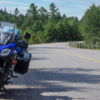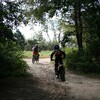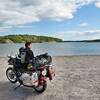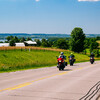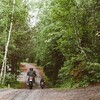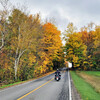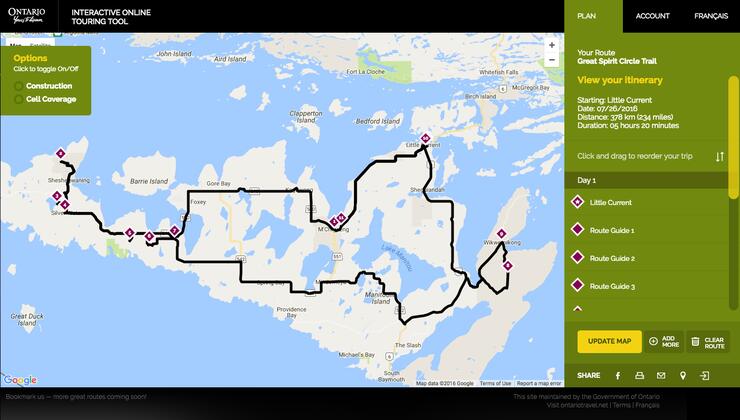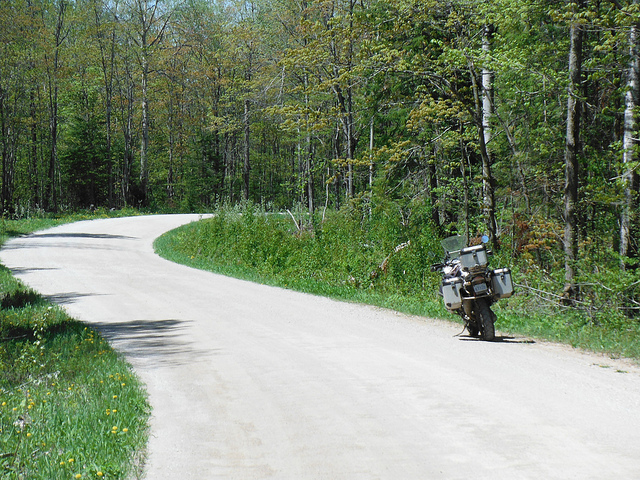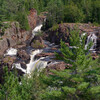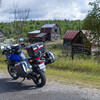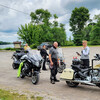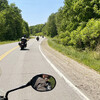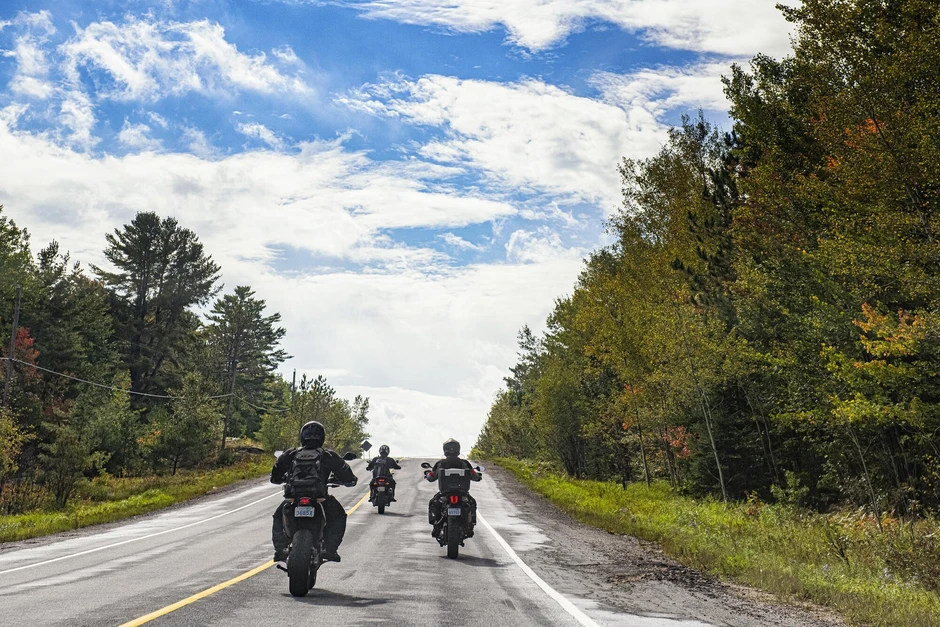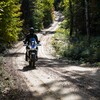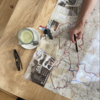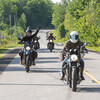
Feeling the Pulse of the Land
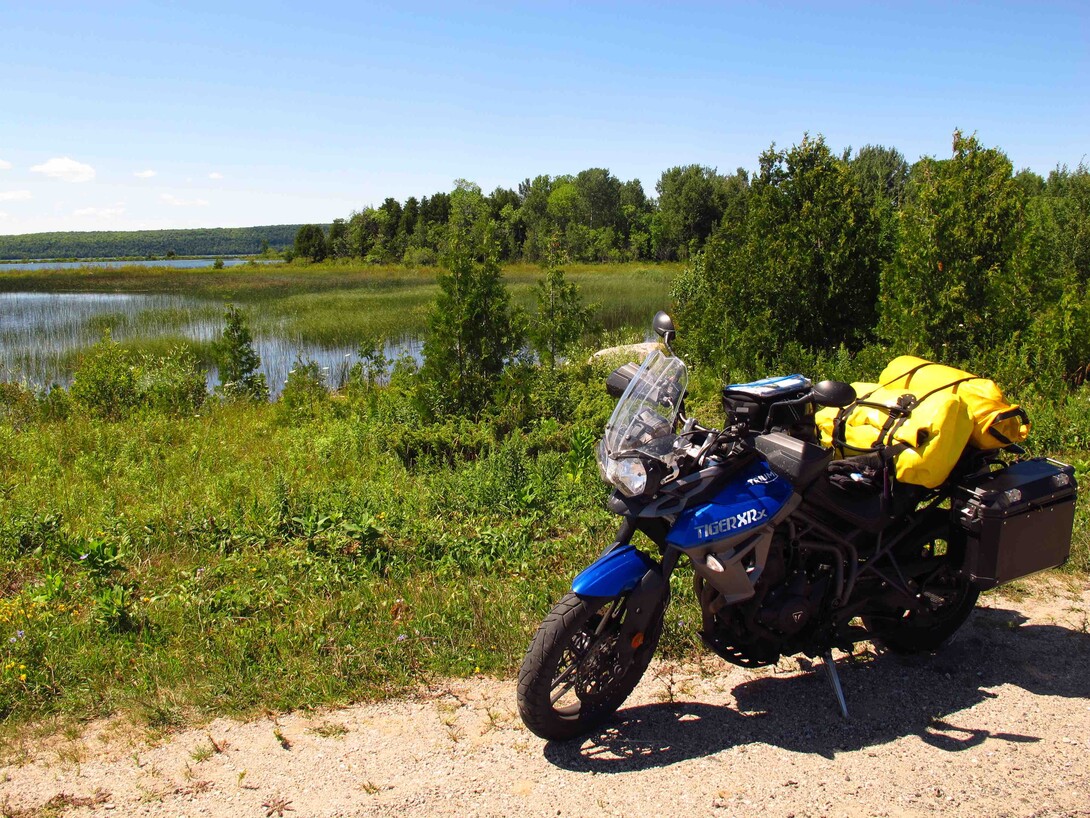
Last year I visited Manitoulin Island and was introduced to Anishinaabe history and legends of the land. Curious to learn more from Spirit Island’s indigenous people, I returned, this time to the Great Spirit Circle Trail (GSCT), in M’Chigeeng to participate in some cultural experiences.
Getting the Tourist Thing Right
Kevin Eshkawkogan, CEO, welcomed me and explained the history and mandate of the GSCT as he guided me around the site. As interest in aboriginal tourism began to grow in the mid-90s, non-aboriginal guides began bringing tourists into the region, giving their well-intentioned interpretation of aboriginal history, culture, and traditions, but quite frequently they were getting it wrong.
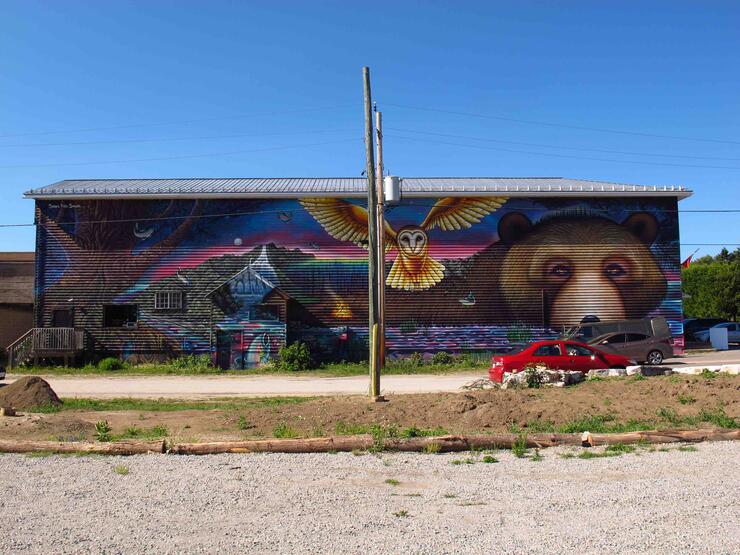
Seeing an opportunity to correct this and share their knowledge, area First Nation elders and economic development officers decided to start their own business based on cultural integrity guidelines. Nineteen years later, GSCT, 100 percent owned and staffed by First Nations people, is the industry leader in Aboriginal Tourism and widely consulted by other Aboriginal Tourism organizations both within Canada and internationally.
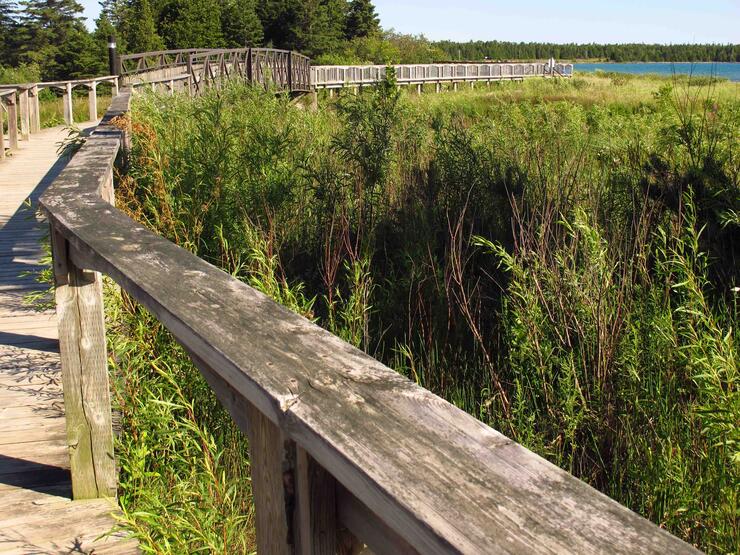
“Sharing how and why we do things is a natural fit,” explains Kevin. “We’ve always been hosts to this land, going back to the first visitors.”
He’s the first to acknowledge the challenge to balance running a business and maintaining the traditional communal ways. “It’s our responsibility to share cultural teachings,” says Kevin. “When people ask me, I’m helping. If they’re looking to share the good things we’re doing, we’re happy to share.”
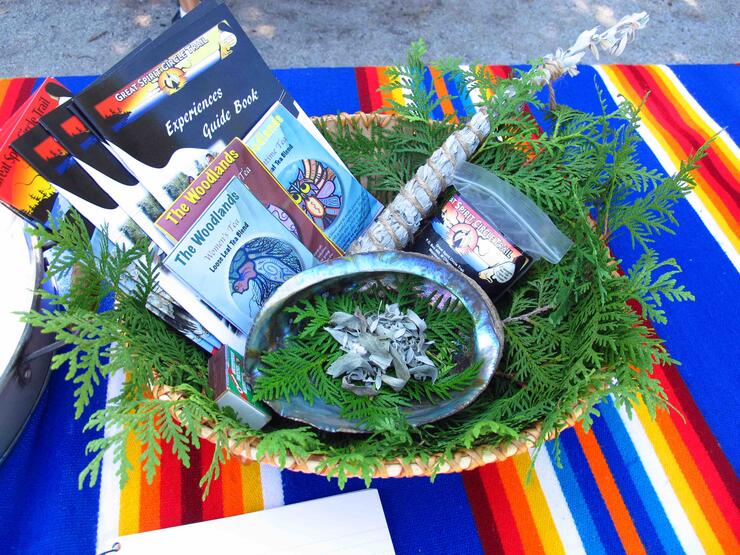
The Anishinaabeg were nomadic. Kevin’s ancestors arrived on Manitoulin in the 1700s from what is now Wisconsin and Minnesota; others came before and more came later. While the site primarily reflects Anishinaabeg traditions, the influence of interaction with other cultures is evident. For example, only three of the four sacred medicines—sage, sweetgrass, and cedar—grew well here. Tobacco is obtained through trade.
Similarly, wigwams became the preferred housing structure rather than the more portable teepees used by tribes on the plains. While examples of both, as well as many other types of accommodations are available on the island, glamping happens in teepees as per market demands.
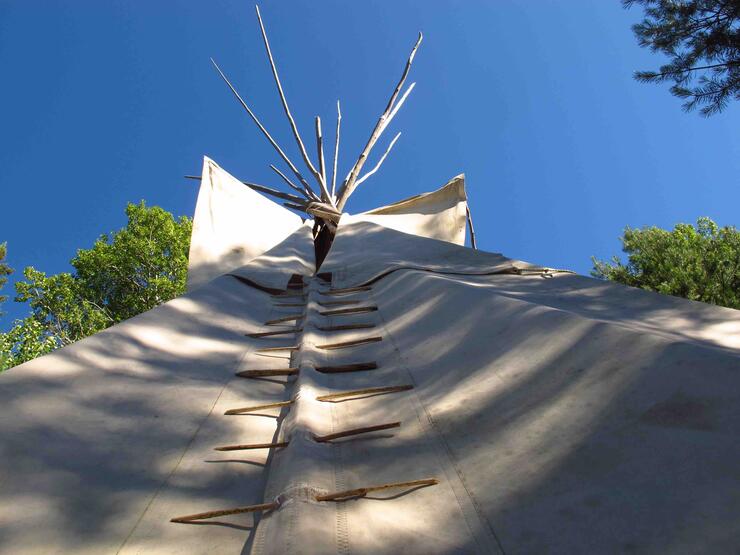
GSCT’s interactive experiences, delivered according to tradition and aligned with cultural values, engage all the senses. They particularly enjoy hosting groups like motorcyclists who are close to the land. “Everything we do is about being outside and people who are active and enjoy the outdoors align well with what we share and do,” says Kevin.
Click on the interactive map below and start planning your motorcycle tour of Manitoulin Island now!
The Bounty of the land
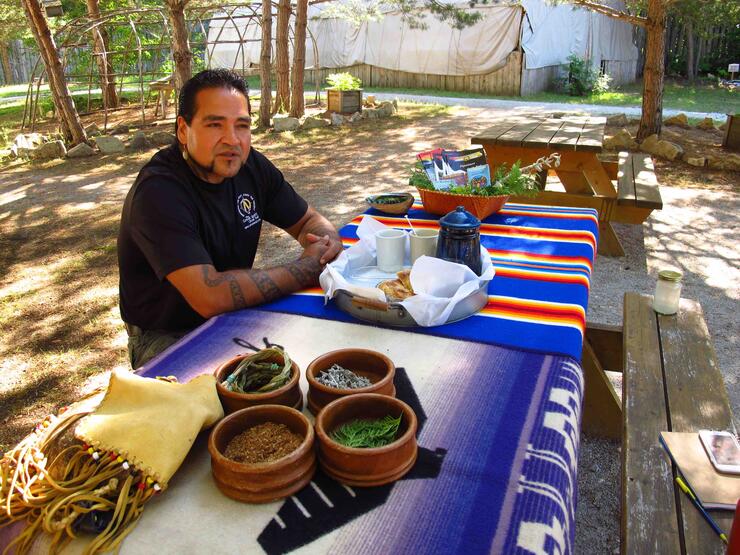
Falcon Migwans met me at the picnic table close to the fire pit. Not only has he spent seven years with an elder learning traditional herbology and been asked by the elders to continue that tradition, he’s also been bestowed the role of storyteller to carry and share traditional stories.
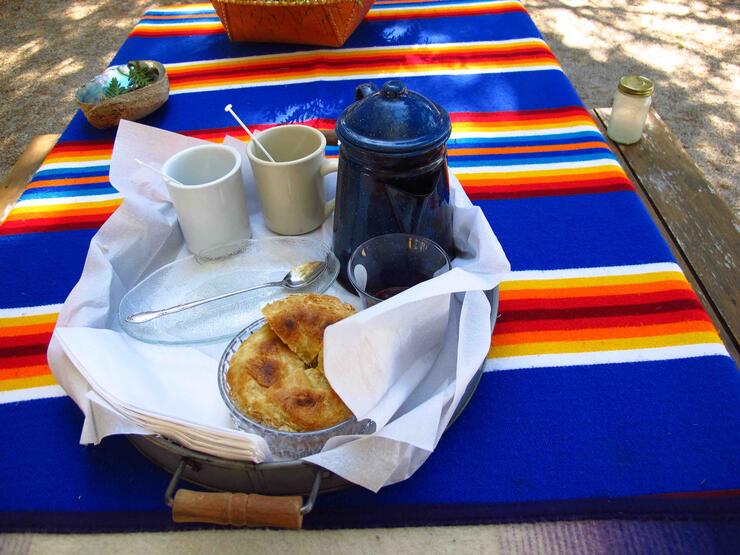
Over cedar tea and bannock, he explained the four uses of plants: medicines like ointments and teas to alleviate physical symptoms, medicines for the spirit, like the white sage used for purification in smudging, edibles, like berries and roots, and the practical, for building structures or canoes.
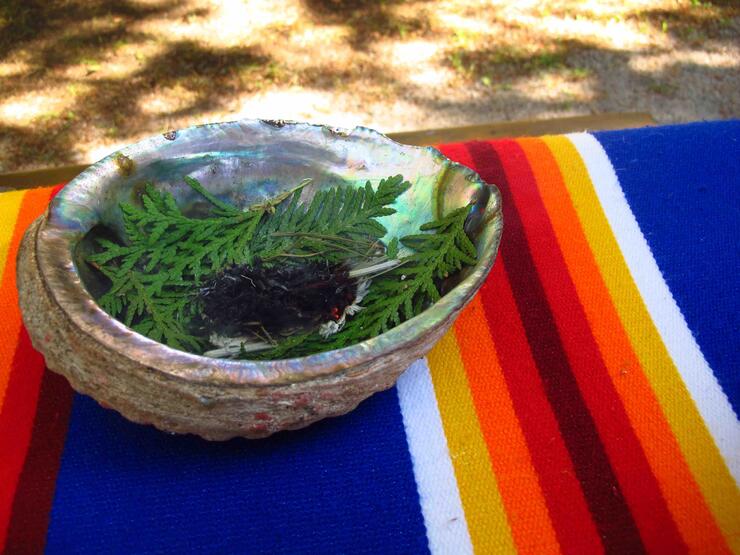
Before heading out into the woods, he smudged himself, then offered the smoldering sage to me and I did the same. We then laid a gift of tobacco at the edge of the woods, explaining what we’d be doing and giving gratitude.
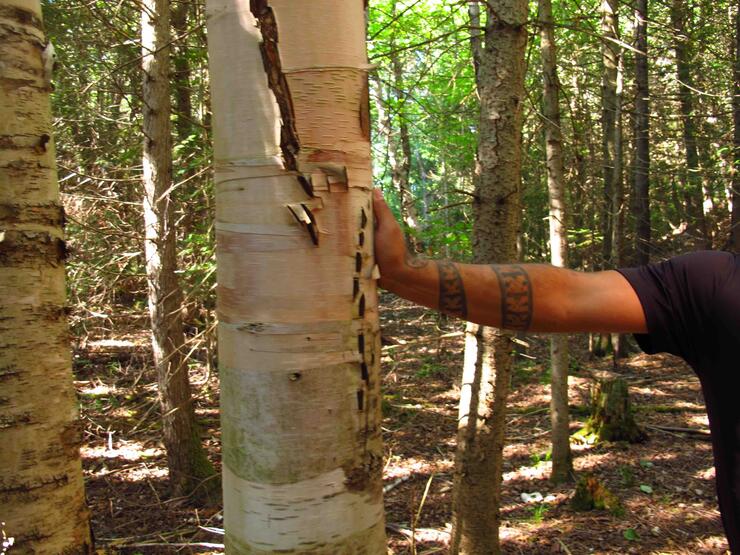
As we walked, he pointed out black poplar buds, whose sap is used to prepare topical ointments, milkweed, used for starting fires and soup, and black ash trees whose fibrous bark makes strong baskets. Deeper in, he showed me how white birch bark used for canoe skins was harvested so as not to damage the tree. Small bumps on the bark of the balsam tree contain sap and when you puncture them with a stick, fragrant sap is released. Thankfully he also pointed out the poison ivy, which everyone avoids!
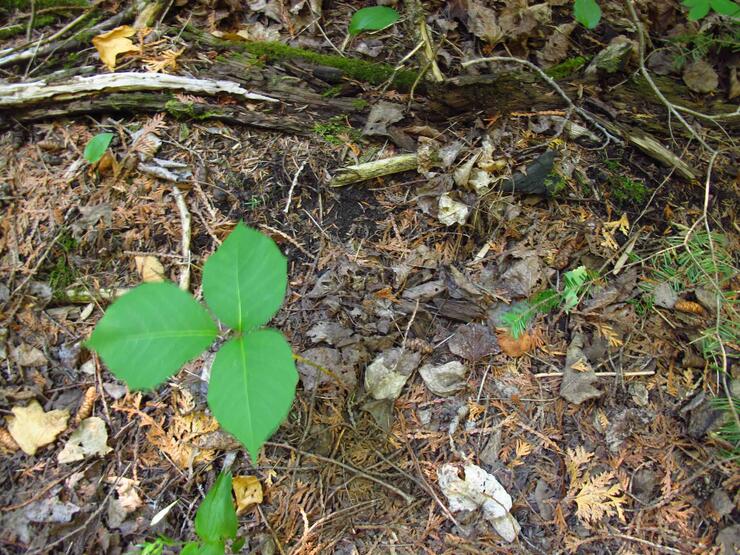
He cautioned about preparing one’s own medicines without the proper knowledge. “It’s easy to misidentify indigenous plants and if it’s prepared with the wrong one or in the wrong way, you can end up getting hurt.”
In the Beginning
Later that evening around the fire, it was time to hear stories. In an oral tradition, stories were the means for passing on traditional teachings, like where dreams come from. They also taught life lessons needed for well-being and survival, preserved the history, such as that about previous chiefs, and taught about the local area.
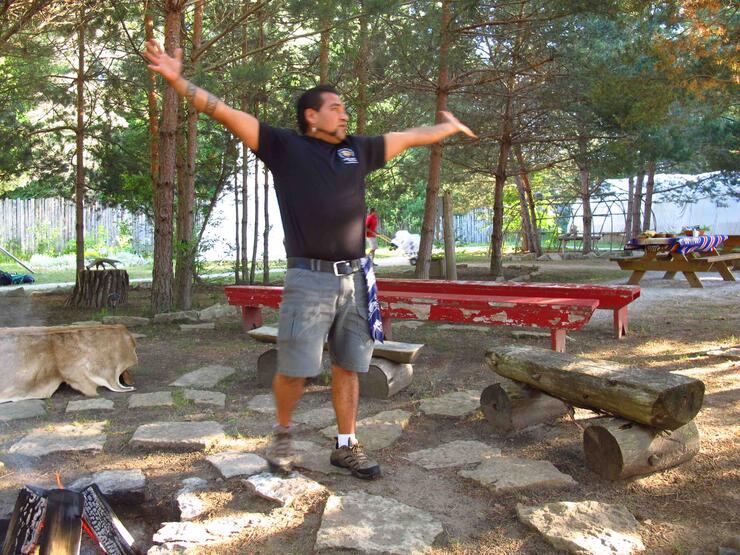
We listened in fascination as he described how the Creator made Manitoulin, starting with a flat rock, and sprinkling just a bit of soil on top before surrounding it with water. He then invited fish, the flyers, and the four-legged ones. When He was done, it was so lush and beautiful it became his vacation place. Today the hardwoods, sand dunes, alvars, and swamplands create a rare ecological community found nowhere else in the world, supporting rare and significant species.
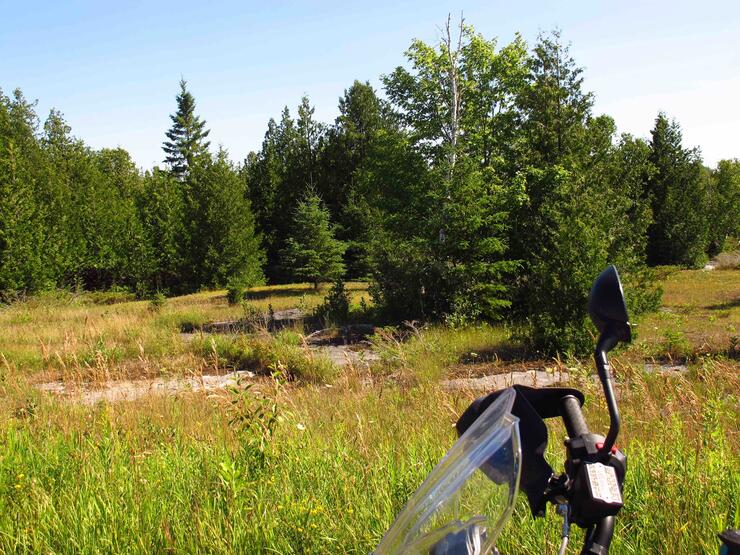
In precise alignment with GSCT’s tagline of Experience the Past, Enjoy the Present, Falcon says, “Our people have been here for 9,500 years. The traditional teachings have been adapted for modern times but they are just as meaningful. Ultimately, we are here to live with Mother Earth, not on her.”
As I retired to my candle-lit teepee, my head was full of stories from the people who had lived on this land, respecting the natural balance and harvesting only what they needed, using all parts of whatever was harvested, whether plant or animal.
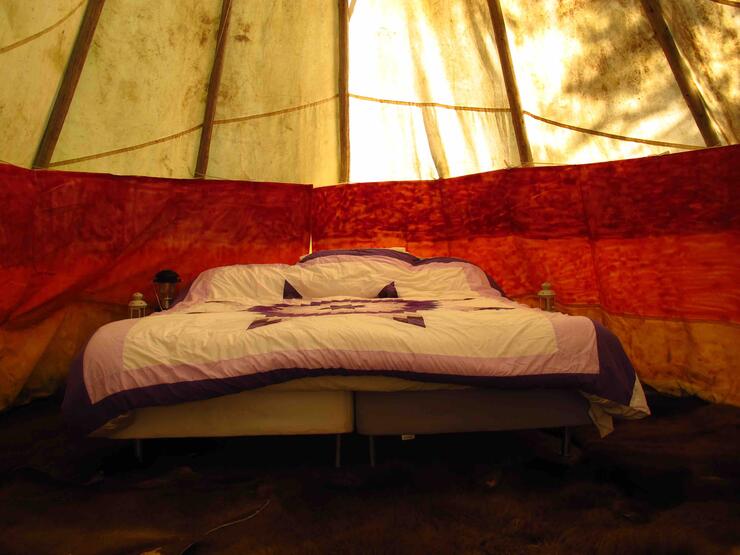
Buffalo and deer hides covered the floor, taken from animals who had given their lives to provide food, clothing, and even oil, so others could survive. Cool winds blew in off the water. Through the open flaps, I could watch the stars. In the simplicity and minimalism of the interior, needing no more, I felt an overwhelming sense of timelessness and being a part of something much greater, going beyond the connectedness one feels when riding through nature on the open road.
A Learning Experience as Unique as You Are
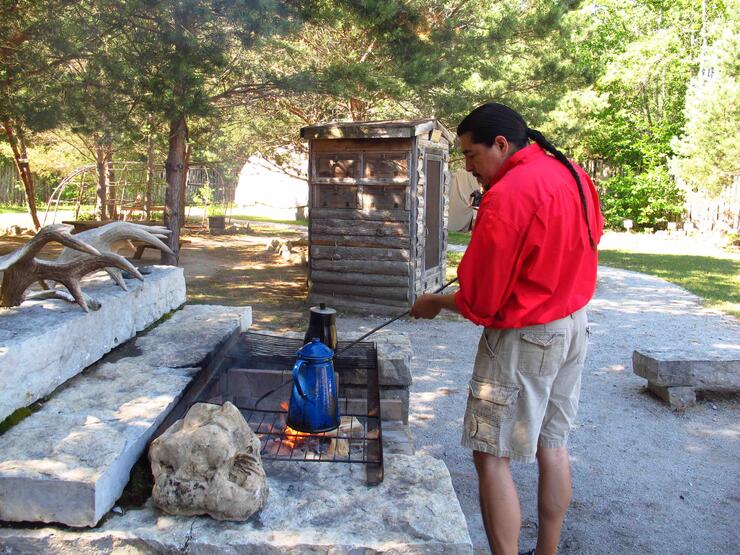
The next morning I was treated to a sampling of teas from plant species indigenous to the area. Starting with bannock and cedar tea brewed in water brought to boil over the fire, Craig Fox greeted me at the picnic table. Craig grew up in the Wikwemikong Unceded First Nation on northeastern Manitoulin and worked on his grandfather’s farm between ages 11-17. He knows his plants.
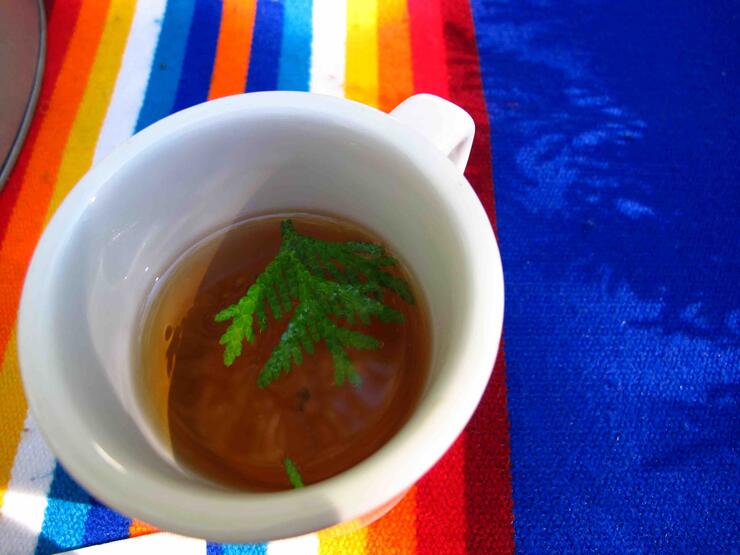
After smudging, we hiked the short path out to the woods and nature’s pharmacy. Craig laid down tobacco and explained what we were doing and quickly stripped soft cedar leaves from the branches, taking only what we needed. Once back, he demonstrated how to brew it, before sampling other tea mixes, like Energy Boosting Tea, made from mint leaf, lemon balm, Vitamin D containing red clover, and nettle leaf. Raspberry and strawberry are acknowledged as women’s teas as they help with reproductive and childbirth processes. I’m curious to try the lavender, primrose and lemon balm blend, meant to help with sleep and dream time.
You cannot walk into this place and share the experiences without being touched by the energy. It changes your perspective as you ride across the beautiful land, and somehow, you just naturally slow down.
“Everyone’s experience at GSCT is different,” says Kevin. “You’re going to hear what you’re meant to hear. You’re going to take away what you’re meant to take away for what you’re doing, and what’s going on in your life. That’s a basic principle in our life. You only take what you need.”
There was a light breeze, the sun was shining and the sky blue as I packed up and set out to ride the island—my appreciation of the land and its people and my connection to my surroundings much deeper than when I’d arrived.
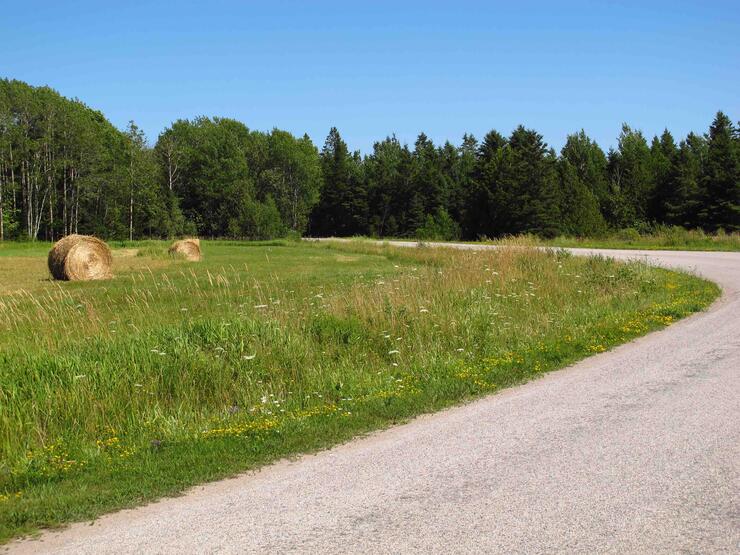
About the Great Circle Trail
GSCT offers a variety of guided tours and experiences, including sunrise canoe tours, drum making, hiking, and craft making. Many guests come purely for these experiences as they pass through. Reservations are highly recommended.
Accommodations include teepees and cabins. There is Wi-Fi on site but to keep the experience as authentic as possible, “rooms” have no electricity or plumbing. A communal washroom and shower serve the guests.
Recommended Articles

Bucket List Motorcycling in Ontario, Canada

Ontario's Best Twisties

The Big Belly Tour

It's Bike Night in Ontario 2024

Ontario's Top Twisties
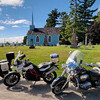
Here's Why Every Rider Needs to Hit Up Historic Highway 2

23 Amazing Photos That Prove PD13 Is Still The Best Motorcycle Event Ever

Motorcycle Swap Meets in Ontario—The Complete List for 2024
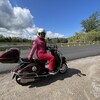
And a Vespa shall lead them all...
